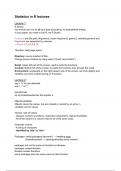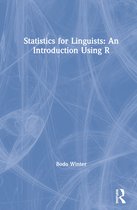Samenvatting
Summary Statistics in R - Statistics for Linguists: An Introduction Using R
- Vak
- Statistics in R
- Instelling
- Universiteit Van Amsterdam (UvA)
Summary of Statistics for Linguists written by Bodo Winter and taught in the course Statistics in R.
[Meer zien]





